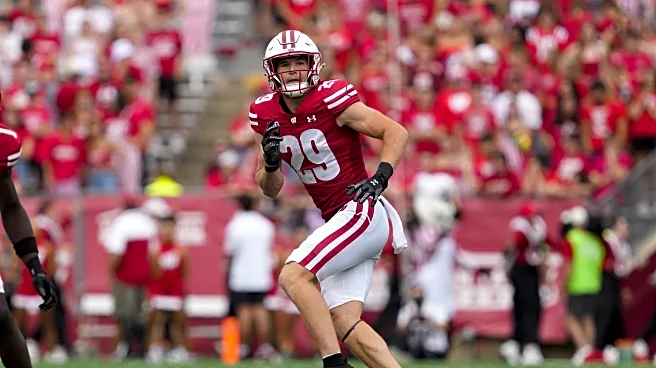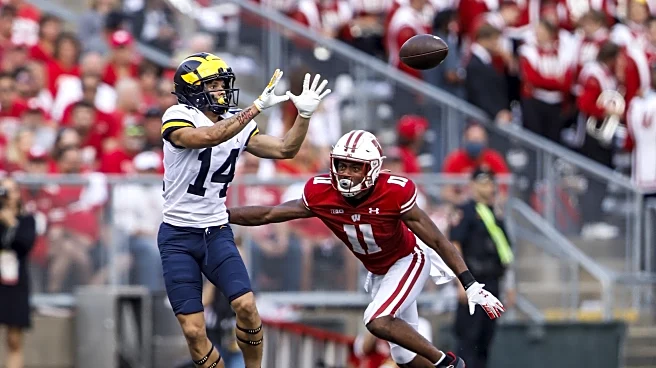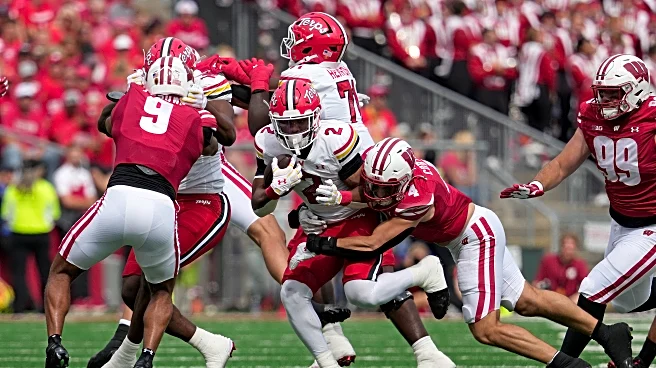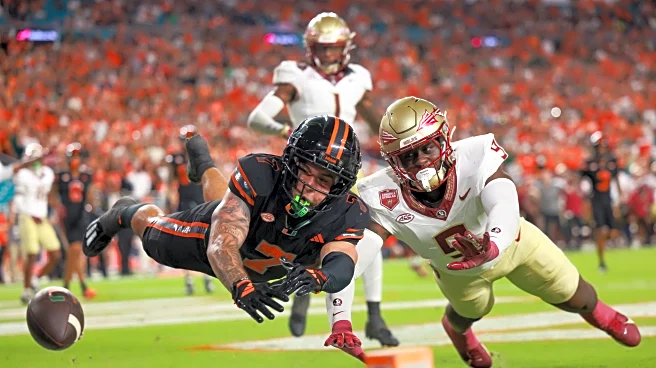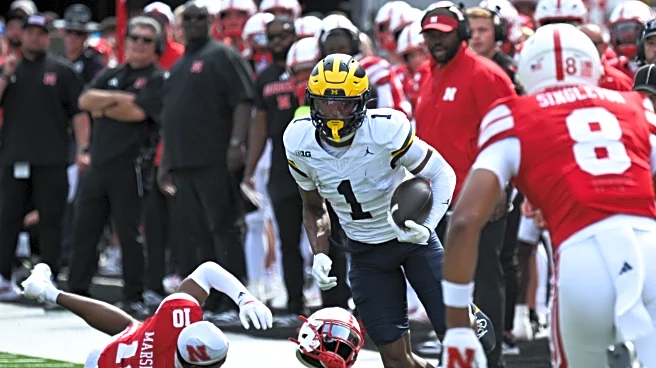What's Happening?
Justice Haynes, a running back who transferred from Alabama to Michigan, has made a significant impact in his new team. During Michigan's recent 24-10 victory over Wisconsin, Haynes rushed for 117 yards and scored two touchdowns. This performance marks the fifth consecutive game in which he has exceeded 100 rushing yards, a feat only achieved by one other Michigan player since 2010. Haynes' impressive start has contributed to Michigan's strong season, following an 8-5 record last year. His transfer was highly anticipated, as he was ranked as the No. 1 overall running back in the 247Sports transfer rankings.
Why It's Important?
Justice Haynes' performance is crucial for Michigan as they aim to return to the College Football Playoff. His ability to consistently deliver high rushing yards and touchdowns provides Michigan with a competitive edge, potentially filling gaps left by previous players. Haynes' success also underscores the impact of transfer players in college sports, highlighting how strategic transfers can significantly alter a team's dynamics and performance. For Michigan, Haynes' contributions could be pivotal in their quest for a national title, influencing recruitment strategies and team composition in the future.
What's Next?
As the season progresses, Michigan will likely continue to rely on Haynes' abilities to maintain their winning streak. His performance will be closely monitored by coaches and analysts, as it could set new records and benchmarks for the team. The upcoming games will test Haynes' endurance and adaptability against different opponents, potentially influencing his future career prospects in professional football. Michigan's coaching staff may also explore strategies to maximize Haynes' impact while ensuring his health and performance sustainability throughout the season.
Beyond the Headlines
Haynes' success at Michigan highlights broader trends in college sports, where player transfers are becoming increasingly common and impactful. This development raises questions about the balance between nurturing homegrown talent and integrating transfer players to enhance team performance. It also reflects the evolving landscape of college athletics, where players seek opportunities that align with their career aspirations and personal growth. Haynes' journey may inspire other athletes to consider transfers as a viable path to achieving their goals.






